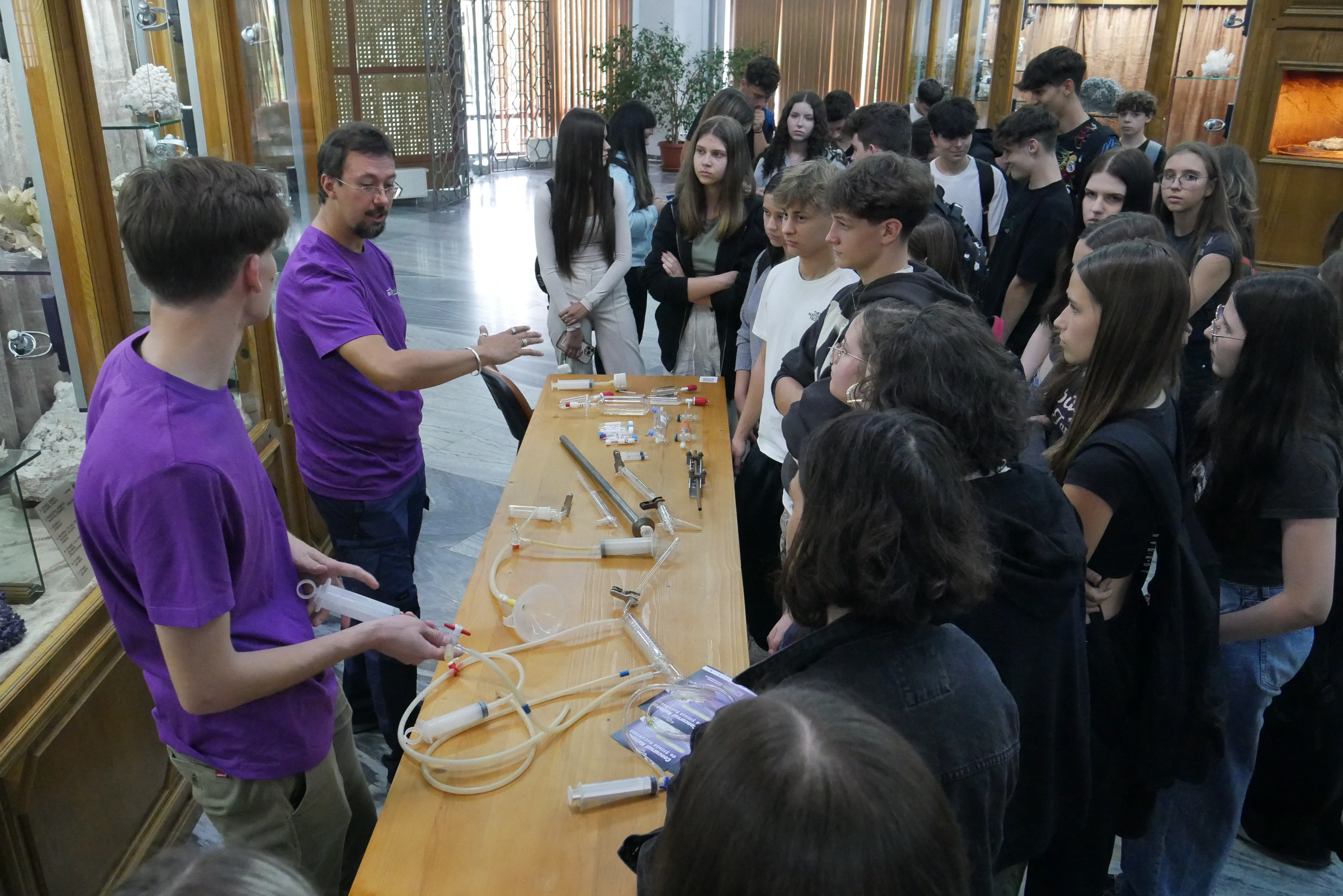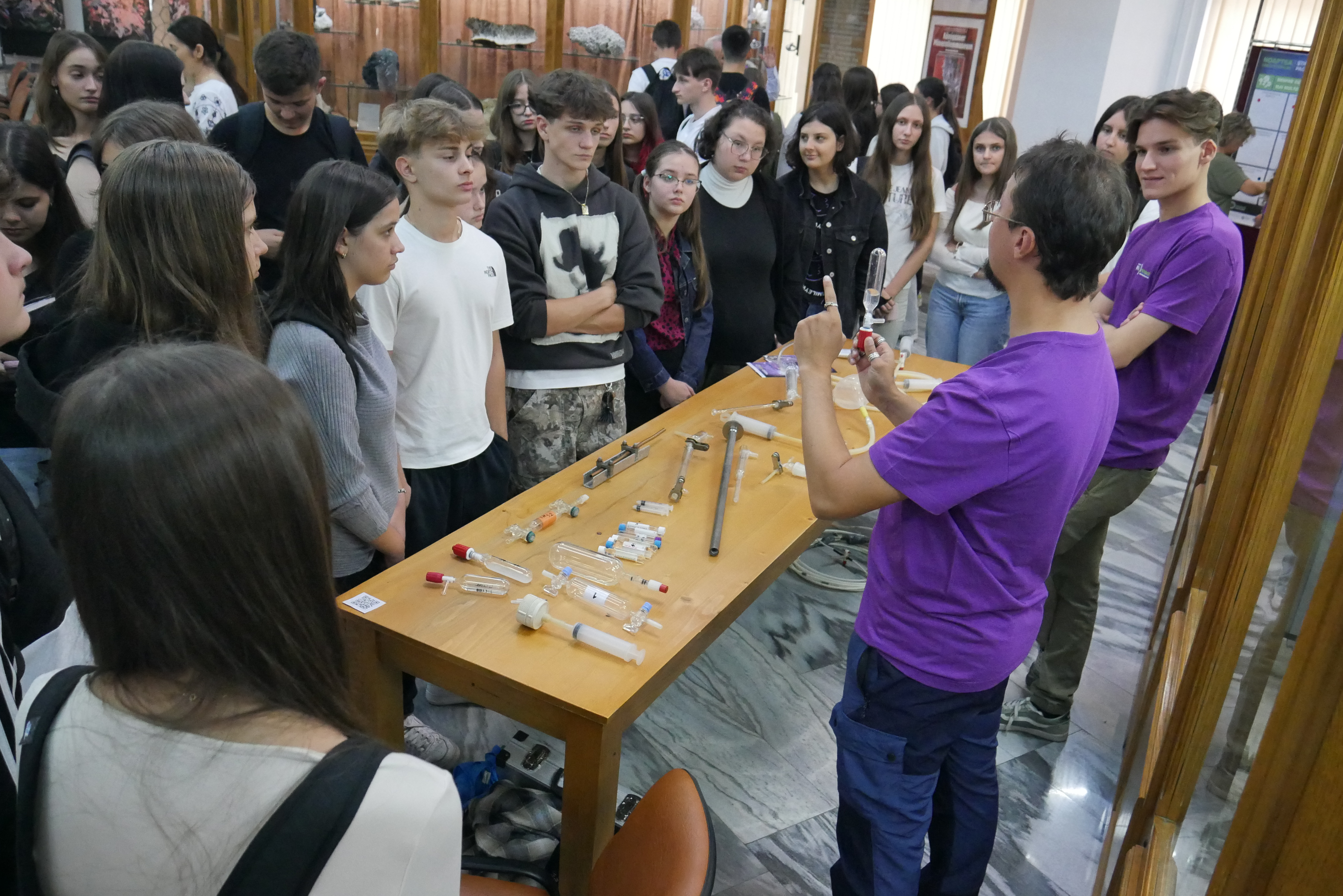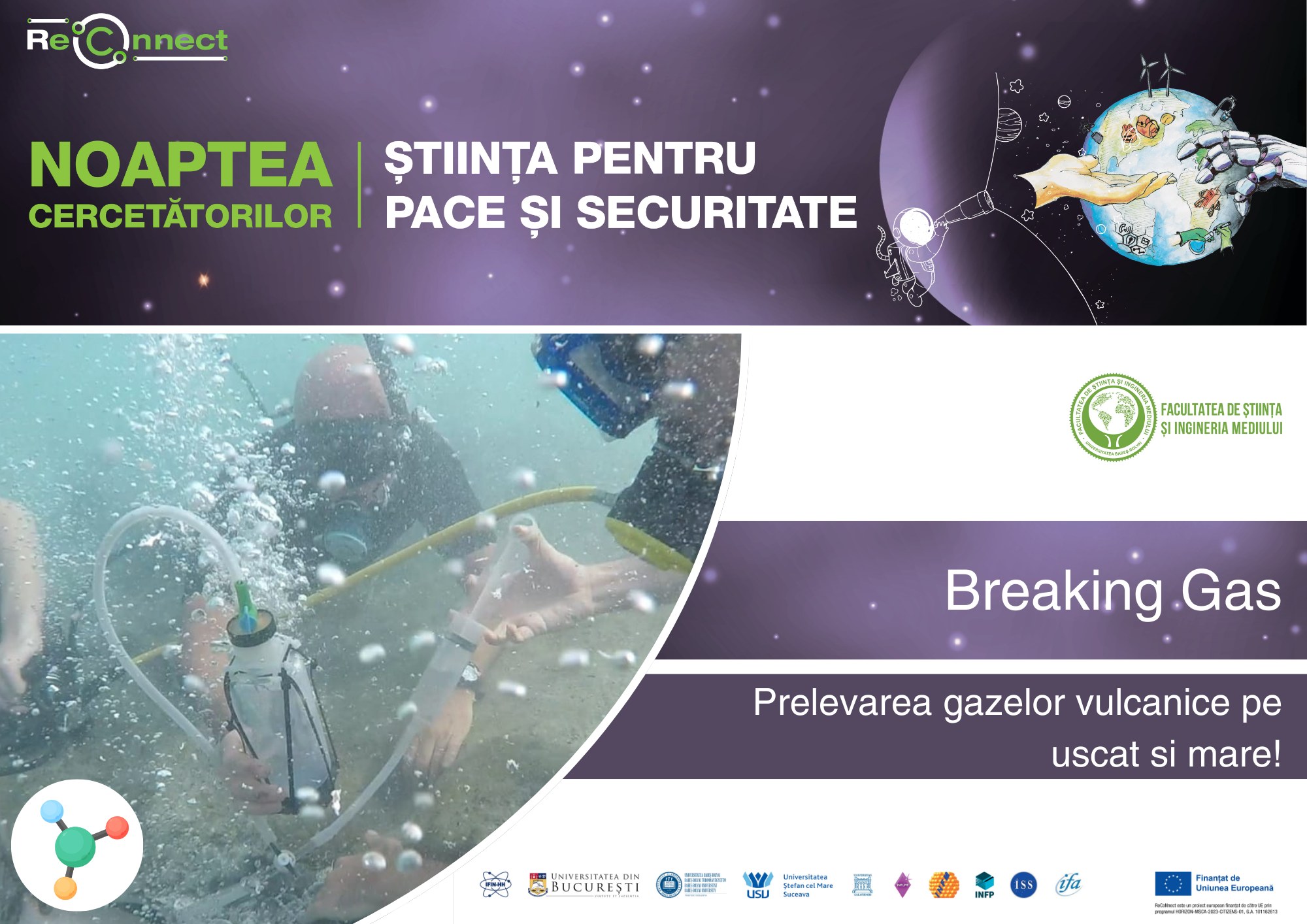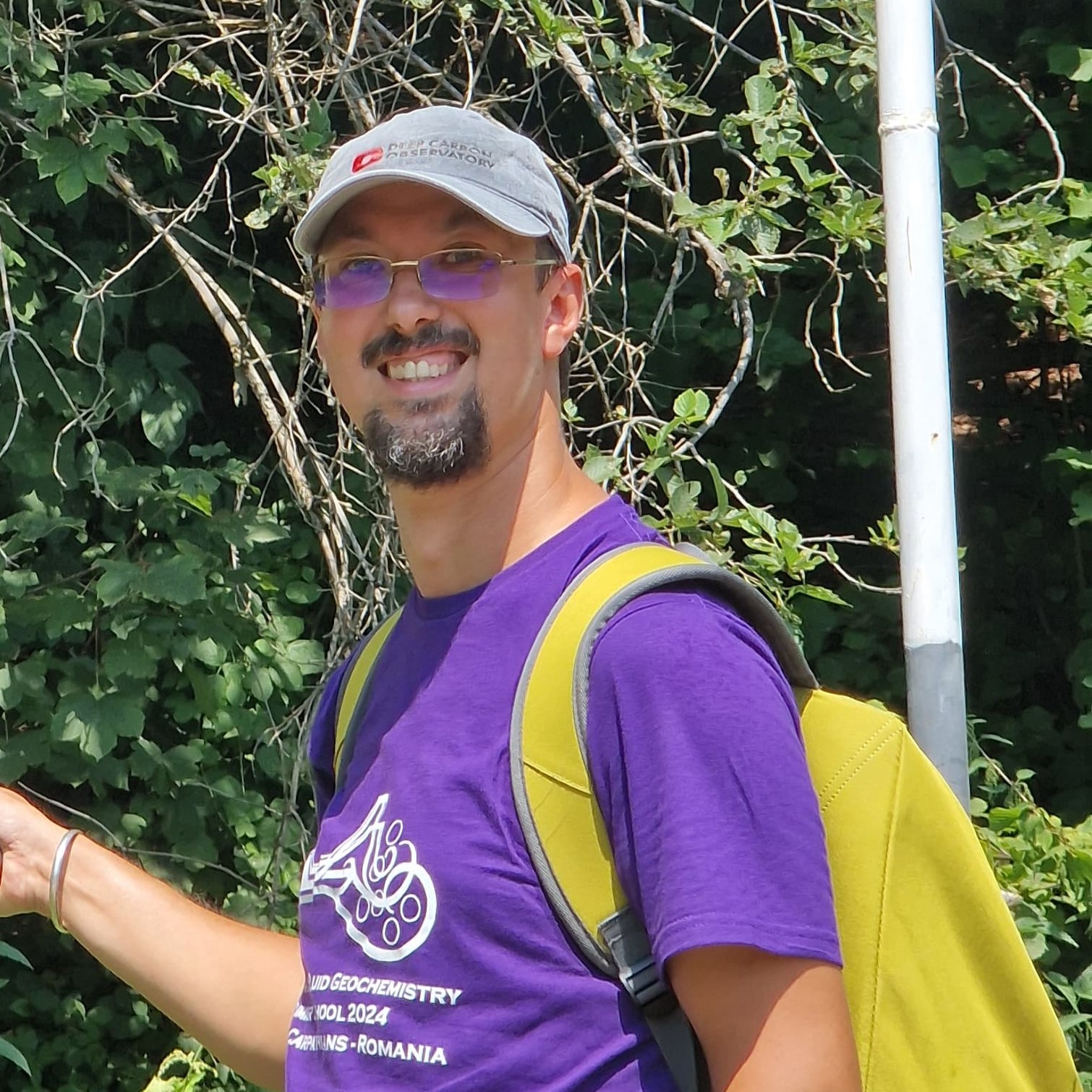3 min to read
Volcanism – monitoring and risks
Baia Mare - European Researchers Night
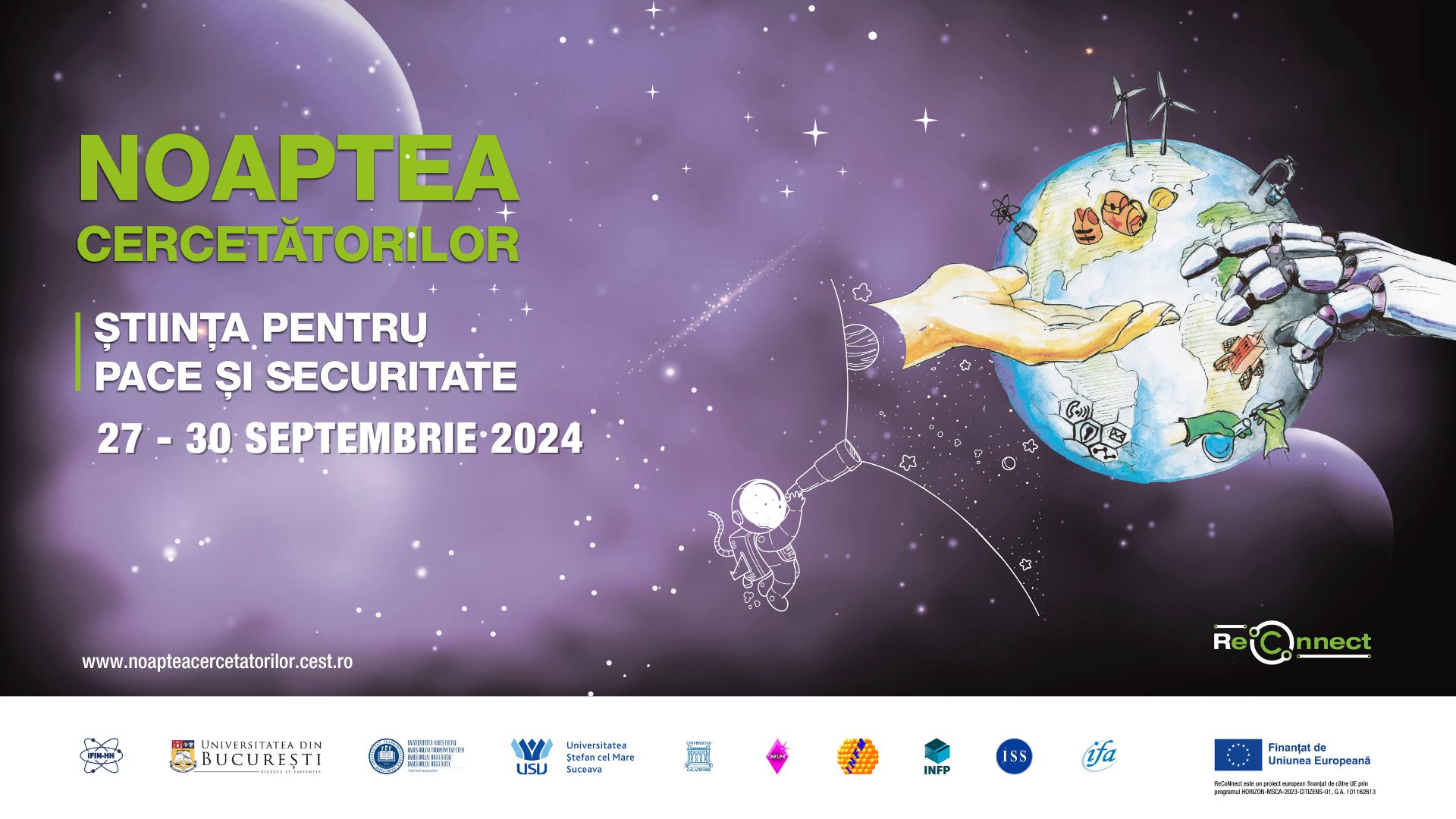
From 27 to 30 September 2024, Romania hosted the European Researchers’ Night, a large-scale event that took place simultaneously in 21 localities, coordinated by the ReCoNnect consortium. The theme of this year’s edition, “Science for Peace and Security”, brought to the fore the role of research in creating a safer and more sustainable environment, through interactive experiments and discussions on complex topics, with the aim of bringing science closer to the community and encouraging young people to get involved in research.
In Baia Mare, the events took place at the “Victor Gorduza” County Museum of Mineralogy and the Museum of Astronomical Sciences, where the public could interact directly with researchers and witness innovative scientific experiments. Both children and adults had the opportunity to discover how science contributes to improving everyday life, through captivating demonstrations and innovative projects.
As an annual event organized throughout Europe, the Researchers’ Night continued its mission to bring science closer to the general public and to promote scientific education in an interactive and accessible way.
The activities organized by the “Victor Gorduza” County Museum of Mineralogy in Baia Mare, on the occasion of the European Researchers’ Night, took place on Friday, September 27, at the headquarters, as components of the event with the theme “Research and monitoring of volcanically active areas - a prerequisite for preventing natural disasters.”
The event included two distinct parts: the first part consisted of presentations by specialists from the organizing institutions, and the second part was organized in the form of an interactive workshop.
In the first part of the event, participants had the opportunity to attend two captivating presentations, each offering a fascinating look at volcano research and the importance of monitoring them. The first lecture, entitled “Volcanoes and their monitoring”, was delivered by Dr. Marinel Kovacs. He addressed essential topics about the structure and functioning of volcanoes, explaining not only the geological processes involved, but also the impact that these phenomena can have on the environment and human communities.
The second presentation, entitled “Monitoring volcano activity using gas geochemistry – from theory to applications”, was given by Dr. Artur Ionescu – scientific researcher at the “Babeș-Bolyai” University of Cluj-Napoca. He detailed the advanced techniques used to study volcanic gas emissions, explaining how the analysis of these gases can provide valuable clues about volcanic activity. Dr. Ionescu highlighted the transition from theoretical concepts to practical implementations, demonstrating the relevance of this field of study in preventing natural disasters and protecting human lives.
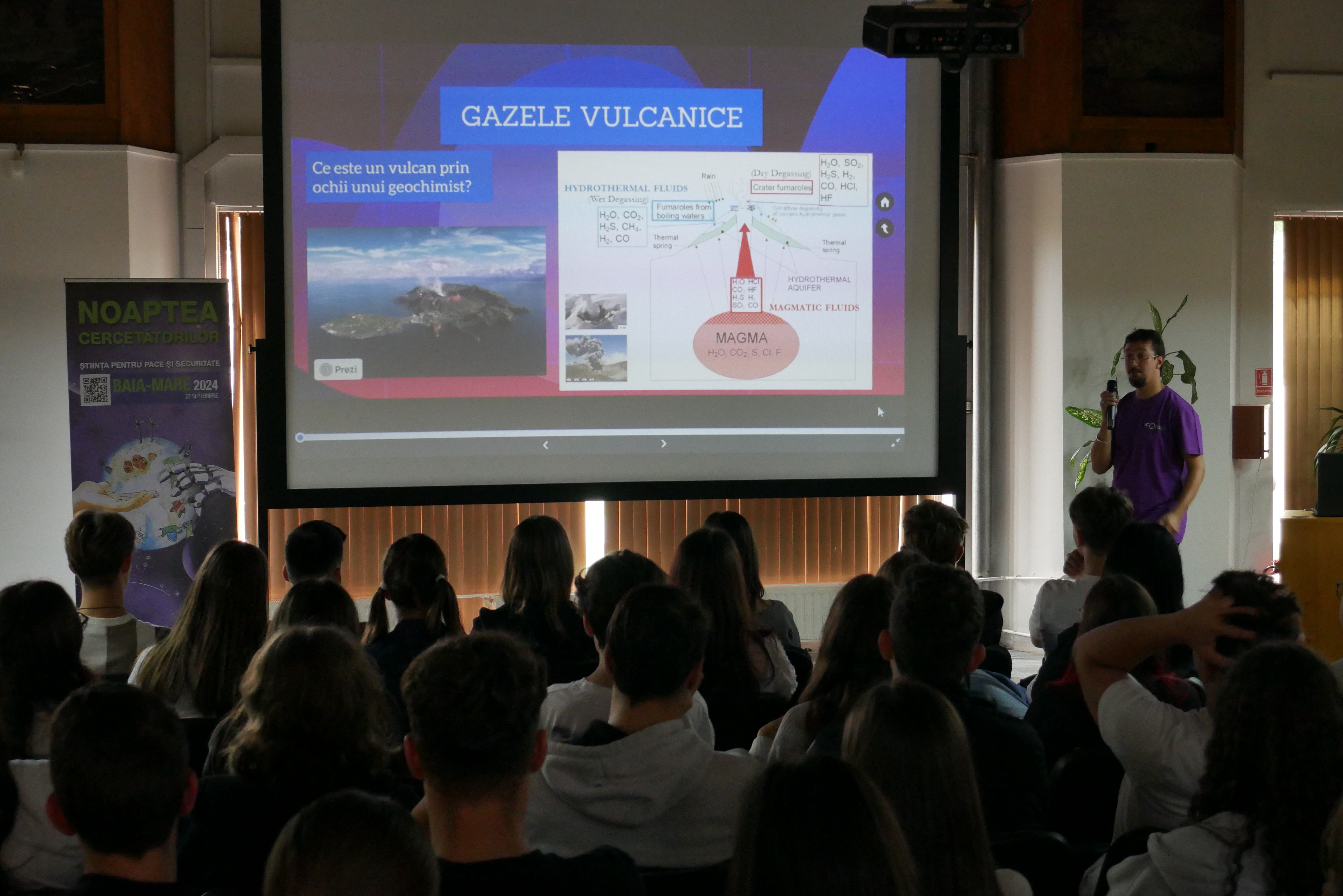
The second part of the event, organized as an interactive workshop, included several elements, namely: an interactive mini-exhibition with consolidated products of volcanic activity and a presentation of the method and techniques for monitoring the activity of an active volcano using a professional model.
One of the central moments of the workshop was the interaction with the consolidated products of volcanic activity, which allowed participants to observe, touch and understand the materials resulting from the eruptions. These samples, collected from different corners of the world, offered a unique perspective on the diversity and complexity of volcanic phenomena, thus making scientific information more accessible and memorable. Students were also able to make microscopic observations on some preparations using binocular magnifying glasses.
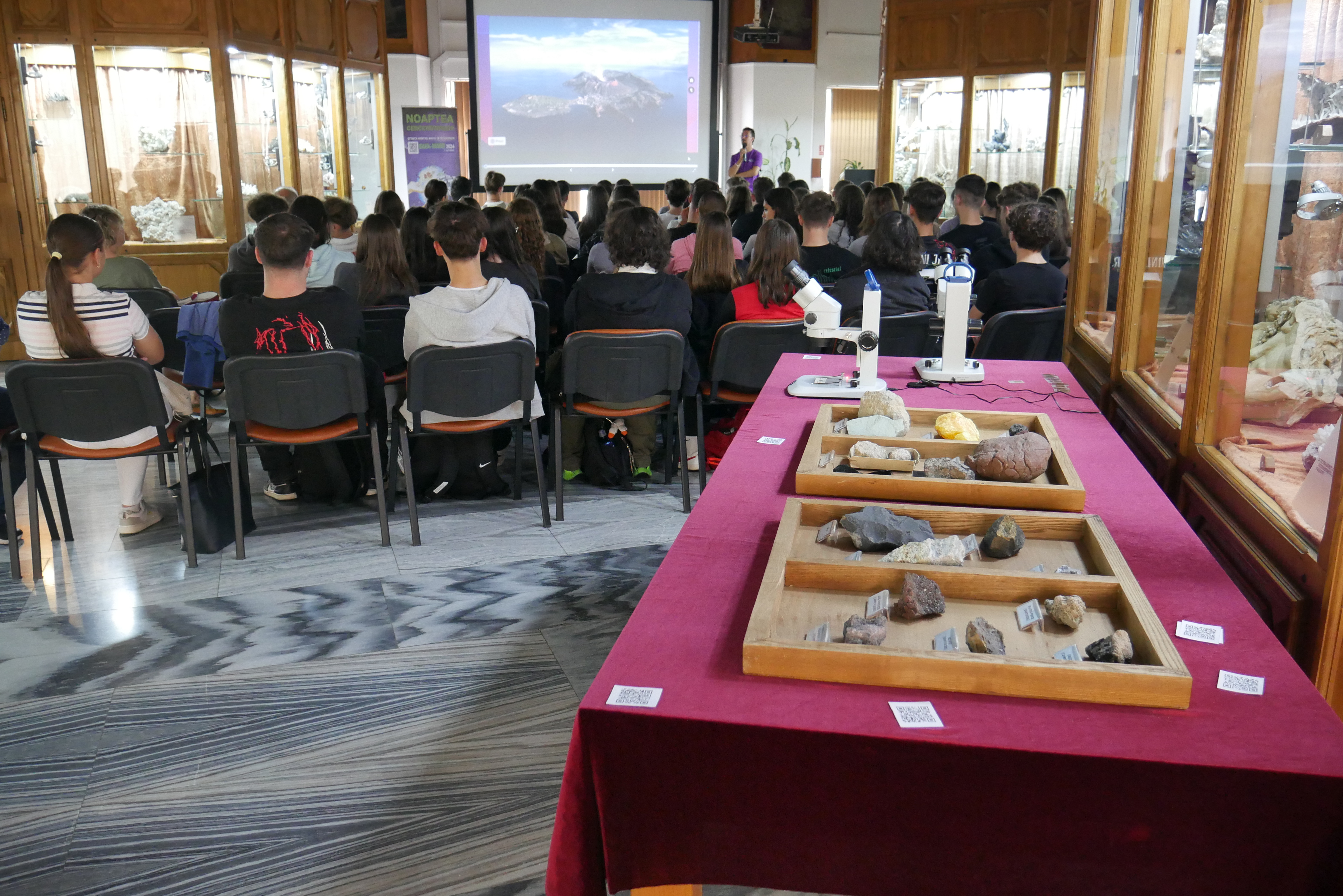
The workshop also included a detailed presentation of volcanic activity monitoring techniques, illustrated using a professional model. Experts explained how modern instruments are used to track volcano activity, providing vital information that can help prevent disasters. Participants learned about the sophisticated instruments used to analyze gas emissions, temperature changes and other key indicators that can predict an eruption. This presentation highlighted the importance of science in preventing natural disasters and highlighted the hard work of specialists in the field, providing a rare opportunity to
